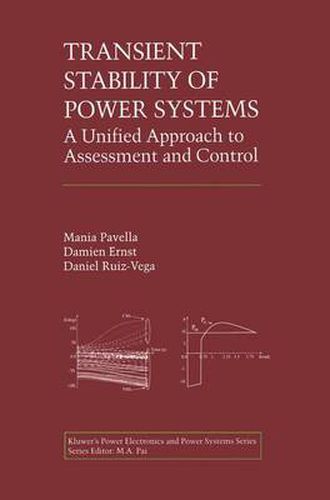Readings Newsletter
Become a Readings Member to make your shopping experience even easier.
Sign in or sign up for free!
You’re not far away from qualifying for FREE standard shipping within Australia
You’ve qualified for FREE standard shipping within Australia
The cart is loading…






This title is printed to order. This book may have been self-published. If so, we cannot guarantee the quality of the content. In the main most books will have gone through the editing process however some may not. We therefore suggest that you be aware of this before ordering this book. If in doubt check either the author or publisher’s details as we are unable to accept any returns unless they are faulty. Please contact us if you have any questions.
This monograph is devoted to a hybrid-direct temporal method called SIME (for Single Machine Equivalent). SIME processes temporal information about the multimachine system dynamics to assess and control any type of transient instabilities under any type and model of power systems. Two approaches may be distinguished depending upon the source of information used: Preventative SIME which relies on a time-domain program to simulate anticipated contingencies, and Emergency SIME which uses real-time measurements. Preventative SIME mainly comprises two techniques: contingency filtering, ranking, and assessment; and (simultaneous) stabilization of harmful contingencies. The resulting preventative transient stability assessment and control (TSA&C) software can be used in all application contexts of transient stability studies. In a control center, for instance, its computational performances enable it to cope with very stringent requirements of real-time operation. Besides, interfacing SIME with an OPF algorithm allows combining transient stability constraints with specifics of the liberalized electricity market. Emergency SIME is a novel closed-loop control technique which contains the transient instabilities caused by contingencies’ actual occurrence. It relies on real-time measurements to predict (the size of) instability and, accordingly, to design and trigger control actions able to impede system loss of synchronism. Emergency SIME is particularly suitable for protecting important generation sites and can complement preventative SIME. Both approaches rely on the same principles and basic software which yields a comprehensive and unified approach to TSA&C. The design of near optimal control techniques is a major asset of this software. This book provides extensive illustrations on a variety of power systems ranging from a simple 3-machine test system to real-world power systems comprising up to 627 generators and 4112 busses. This work should be especially helpful to researchers, utility engineers, and software designers and developers who are developing various types of transient stability software packages.
$9.00 standard shipping within Australia
FREE standard shipping within Australia for orders over $100.00
Express & International shipping calculated at checkout
This title is printed to order. This book may have been self-published. If so, we cannot guarantee the quality of the content. In the main most books will have gone through the editing process however some may not. We therefore suggest that you be aware of this before ordering this book. If in doubt check either the author or publisher’s details as we are unable to accept any returns unless they are faulty. Please contact us if you have any questions.
This monograph is devoted to a hybrid-direct temporal method called SIME (for Single Machine Equivalent). SIME processes temporal information about the multimachine system dynamics to assess and control any type of transient instabilities under any type and model of power systems. Two approaches may be distinguished depending upon the source of information used: Preventative SIME which relies on a time-domain program to simulate anticipated contingencies, and Emergency SIME which uses real-time measurements. Preventative SIME mainly comprises two techniques: contingency filtering, ranking, and assessment; and (simultaneous) stabilization of harmful contingencies. The resulting preventative transient stability assessment and control (TSA&C) software can be used in all application contexts of transient stability studies. In a control center, for instance, its computational performances enable it to cope with very stringent requirements of real-time operation. Besides, interfacing SIME with an OPF algorithm allows combining transient stability constraints with specifics of the liberalized electricity market. Emergency SIME is a novel closed-loop control technique which contains the transient instabilities caused by contingencies’ actual occurrence. It relies on real-time measurements to predict (the size of) instability and, accordingly, to design and trigger control actions able to impede system loss of synchronism. Emergency SIME is particularly suitable for protecting important generation sites and can complement preventative SIME. Both approaches rely on the same principles and basic software which yields a comprehensive and unified approach to TSA&C. The design of near optimal control techniques is a major asset of this software. This book provides extensive illustrations on a variety of power systems ranging from a simple 3-machine test system to real-world power systems comprising up to 627 generators and 4112 busses. This work should be especially helpful to researchers, utility engineers, and software designers and developers who are developing various types of transient stability software packages.